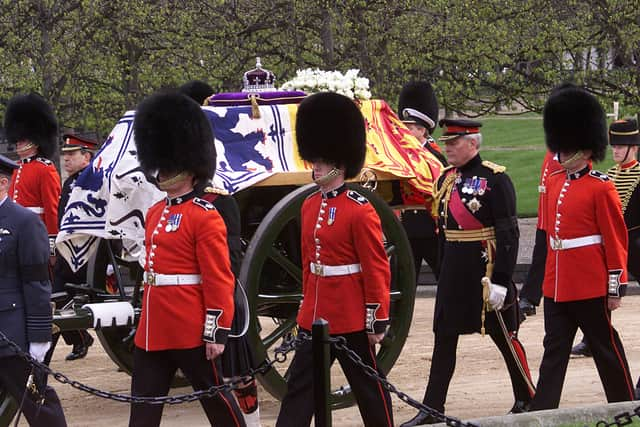Where will the Queen lie in state? Details of how to pay respects to the monarch during mourning period
and live on Freeview channel 276
The public outpouring of sympathy since the passing of Queen Elizabeth II has been strong and emotional.
Numerous tributes have been laid at Buckingham Palace, Windsor Castle and Balmoral Castle, where she died at the age of 96.
Advertisement
Hide AdAdvertisement
Hide AdThe traditional mourning period will also allow members of the public to pay their respects at her coffin side, with her body set to lay in state.
But where will she lay in state, and when can you visit the coffin?
Here’s everything you need to know.


Where will the Queen lie in state?
The Queen’s body will be transferred from Balmoral to Edinburgh this weekend.
Her body will rest overnight at the Palace of Holyrood before being transported up the Royal Mile to St Giles’ Cathedral the next day.
Her body will lie in state for 24 hours at the cathedral.
Advertisement
Hide AdAdvertisement
Hide AdThe Queen’s coffin will then be transported to London. This will happen by rail, or if rail is unavailable, by plane.
Her body will be placed in Westminster Hall in the Palace of Westminster, where it is believed it will lie in rest for a further four days prior to her funeral.
How will respects be paid while the Queen’s body lies in state?
In both Edinburgh and London, the coffin will be guarded 24/7 by military guards, with the public able to visit the coffin for 23 hours in the day.
For those visiting either St Giles Cathedral or the Palace of Westminster, a silent walk will take place around the coffin to pay respects to the former monarch.
Advertisement
Hide AdAdvertisement
Hide AdIn line with tradition, a royal flag - normally a personal standard flag - will be draped over the coffin as it rests on top of a platform draped in a royal purple cloth, known as a catafalque.
Previous monarchs have had the crown jewels placed on top of the coffin, as well as other royal items.
On the 10th day after her passing, the Queen’s coffin will be taken to Westminster Abbey, where she will receive a state funeral.
Hundreds of thousands of people are expected to turn out to mourn the passing of Queen Elizabeth II, with 20,000 people visiting the Queen Mother’s coffin as she laid in state in 2002.
Advertisement
Hide AdAdvertisement
Hide AdThe Queen Mother was the last royal to receive a period of lying in state. Prince Philip would have been entitled to the period of public mourning following his passing however, as per his wishes, the coffin remained in private.
Comment Guidelines
National World encourages reader discussion on our stories. User feedback, insights and back-and-forth exchanges add a rich layer of context to reporting. Please review our Community Guidelines before commenting.
